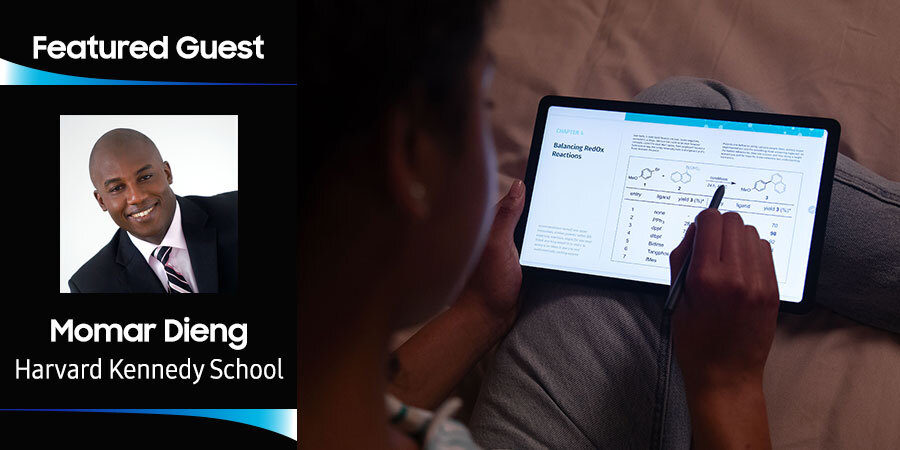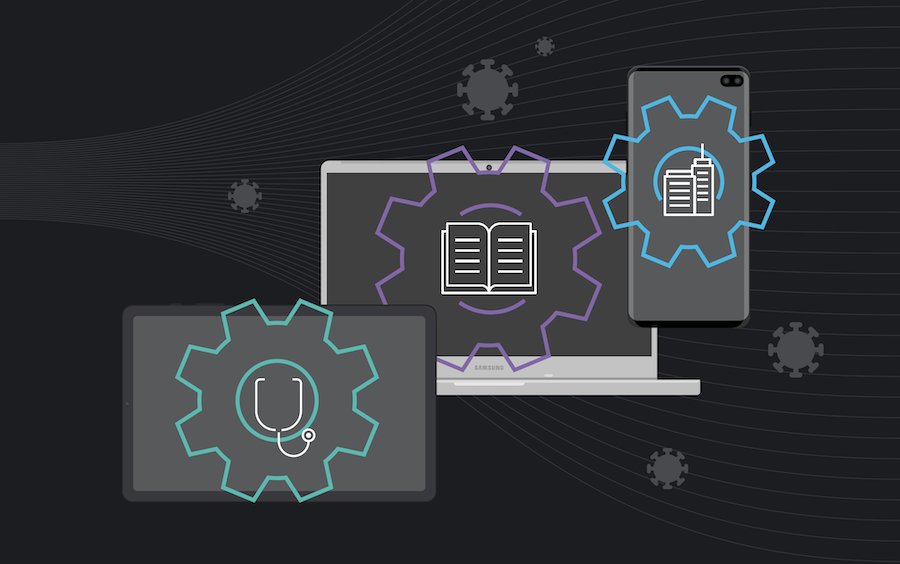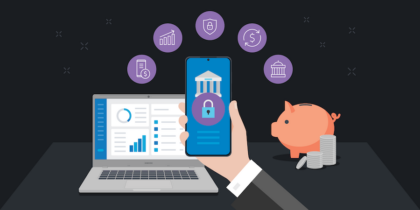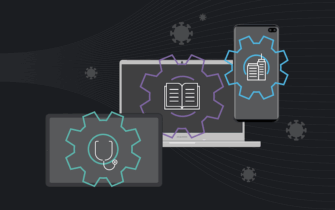Editor’s Note: This conversation is part of our ongoing “Future State Of” series. It has been edited for length and clarity.
The COVID-19 pandemic has dramatically disrupted education across the globe. In the U.S. alone, more than 55 million students are learning from home. And although digital learning has been happening in some form for the last 20 years, its promise has not been met due to limited digital pedagogy and varying levels of quality and efficacy.
During the pandemic, the opportunity to research, build, test and incorporate effective digital learning strategies has been lacking, as educators — along with students, parents and administrators — have had to implement and adapt to the full-time digital classroom experience practically overnight. As a result, tremendous expectations are being placed on platforms like Zoom to recreate the classroom experience without validation of effectiveness.
As we continue implementing digital learning at an unprecedented scale during the pandemic, more questions about how to evaluate and improve the use of technology in education will arise. For example, do digital technologies facilitate similar levels of learning and development as in-person interactions? Do they leapfrog certain concepts, such as social learning? Can they bring about educational equity, or are they destined to further widen achievement gaps?
Taher Behbehani, GM and SVP of Samsung Mobile B2B, sits down with Momar Dieng, a World Bank advisor on global education policy, instructor at Harvard’s Kennedy School of Government and CEO of Africa Web Services, a digital consulting firm. They discuss the challenges and opportunities in education today, the role of the public and private sectors, and what the pandemic means for the future of learning.
Taher Behbehani: Today, I have the pleasure of talking to Momar Dieng who is a World Bank advisor on global education policy and an instructor at Harvard’s Kennedy School. He’s kind enough to join us from Dakar, Senegal. It’s really a pleasure to meet you remotely and discuss education, not only in the U.S., but globally as well. Thanks for taking time.
Momar Dieng: Taher, thank you for having me. It’s a pleasure to be part of this series.
TB: Momar, when this pandemic began, what do you think was the biggest challenge that schools and institutions faced when trying to decide how to approach this new situation?
MD: I think one of the things that’s been hardest for schools was gauging teachers’ and families’ preparedness to support digital learning and how much work all of this was going to entail. For instance, on the teachers’ side, even before COVID came into the picture, research showed that teachers who worked hard to integrate technology still lost up to one-third of instructional time figuring out how to make technology work for them in real-time in the classroom.
Beyond the mechanics, there’s also the deeper question of instructional design. Great in-person teaching does not always translate to great remote online instruction. I’ve discovered this myself as I’ve started teaching online this summer. Despite all of the wonderful help I got from support staff and colleagues at Harvard, it’s just a fact that the online environment requires careful thinking on the use of class-time, on the props and tools that are best-suited. I found myself experimenting with the uses and misuses of the Zoom breakout room, for instance, wondering how to best conduct office hours online, or how to handle questions. All these are things that usually require retraining and time for internalizing and personalization before they can fall into place in a teacher’s workflow.
Emerging changes from the pandemic era
See key learnings and statistics from the Future State of Business 2020 survey and report. Read Here
Now on the family side, I think many schools are still struggling with how to support parents with engagement so that parents can play the ever more crucial support role in this new learning from home setting. Things like how to foster effective two-way communication between school and home are still works in progress for most. These are the things many of us have talked about and written about in theory, but when it came to applying them in practice at scale in this grand natural experiment that COVID has created, it hasn’t been that easy.
TB: It’s true, because you can argue students usually are the digital experts in families and schools. They’re probably more advanced than a generation or two at least, and we know that. But then teachers had to catch up. And then families had to catch up. In fact, I would say education is the hidden gem in this new phase of innovation in all this new technology. Would you agree with that?
MD: Absolutely. I think that we are really at a turning point, and how to make education work in this new world is a challenge, but a very exciting one, a very exciting prospect. Like you said, it’s a hidden gem. Those are the best words to describe it.
TB: And you know, I’m actually seeing a massive amount of hope and joy, because these learnings would be very important for all of us and our countries and societies after all this is over, because this will remain, right? It will level the playing field in terms of education in many different areas.
MD: Absolutely. You know, before COVID came into the picture, education theorists have been lamenting about how education is the hardest thing to change in any government and any society, and we’re still teaching to the industrial age and thinking of schools as factories. And what COVID has done is basically shaken up that whole paradigm. And forced us to do in a span of six months what in the past 200 years educationalists have struggled to do, which is, question everything and put everything on the table and rediscover or requestion some of the basic assumptions.
TB: One of the things that we have seen in the U.S. was a massive spike in demand for devices because you have to be connected. To give you an example, in a very short period of time, we saw about 150 times demand increase in terms of our Chromebooks, our tablets. The demand for tablets have grown just exponentially and supplies are limited. So, what are the learnings or the advice you would have, not only for the school districts in the U.S. but also internationally, on optimizing the number of devices per school, per family. How do we do this?
MD: This is one of the great challenges of this crisis. What it has done is it has propelled online learning from something that’s nice to have, something extracurricular, to becoming basically the lifeline of these education systems. And now we have to start thinking of ed tech and digital technology as more than a stop-gap solution. As you pointed out, one of the stumbling blocks, one of the pain points, is devices.
In the U.S., you have this issue of a shortage of Chromebooks and laptops, and I feel that the shortage is somewhat artificial because there are so many more options. When I talk to school districts, I encourage them to think of other ways that students could be connected. At the end of the day, many tablets are powerful enough and offer enough features for students to do, I would say, 90 percent of the things that they would do on a laptop. So, it doesn’t need to be a laptop necessarily. If you are following courses on videos or on a teleconferencing platform, you actually could do it on your cellphone. And there have been reports that many of the students who couldn’t get their hands on a laptop for the beginning of this academic year have started using their cellphone in a much more active and innovative way.
So, I think that in the case of the U.S., there are solutions that can be put in place both on the side of suppliers and school districts. But we have to be more open-minded in terms of what a device can be, and how different types of devices can allow us to access resources.
Now if I go to other parts of the world — let’s say Senegal, where I am right now — in most of Sub-Saharan Africa the issues are, I think, more serious and more difficult to resolve because the resources are not there in terms of fiscal space and budgetary space. Most of the governments in Sub-Saharan Africa cannot even afford to have a stimulus package of the kind the U.S. government has been doling out. The resources are extremely limited here, and we have to be thinking of different ways to use technology and maybe low-tech ways of approaching the problem — using things like SMS and simple phone calls. I just read a paper on a randomized trial experiment in Botswana that showed significant gains if students and families were just motivated to follow up on their learning using simple phone calls. So, these are behavioral interventions that are very low-tech and can also have a big impact.
TB: That’s really interesting. Let’s talk about this idea of access and having access to internet. What do you think happens when a certain part of society has access and other parts do not? How do we cross that barrier? Should it be a government program? Should it be a technology program? Should it be a combination of private/public sector?
MD: I think that there are stages in the response. In the very short-term, in terms of supplying access to low-income communities — to internet, to public Wi-Fi — that’s something that government, and local government in particular, is best suited to do. I would love to see some of that stimulus money that people are talking about right now be directed to initiatives of that sort.
Now, in the medium- to long-term, I think that industry definitely has a role to play. And this may be one of those areas where we see relearning from developing countries and applying it in more advanced countries. For instance, in developing countries, it’s common to use mobile data for everything and to have devices that primarily function on mobile data and mobile SIM cards, or laptops with USB keys that can connect to mobile internet that way. That’s not something that you see much of in a country like the U.S., but in rural areas for instance, this could be something that is reintroduced in order to give access to students who are not in a coverage area. That would involve making sure that devices are somewhat autonomous when it comes to connecting to the internet and making sure it is seamless, similar to the way that Samsung is doing it — making devices that are able to transform into Chromebooks in a one-click type of way. We need that same type of simple-to-use solution for access.
TB: When you infuse or integrate the elements of technology, do you think that in the next few years, students will have to take a few courses in-person, and then they can actually finish or complete a portion of the education online and be certified? Do you think that’s going to happen?
MD: That’s one of the things I’m really excited about. Making learning into small, bite-sized pieces that people can get certified for, can get credentials for. Recently some of the players in ed tech have actually introduced certifications that you can finish in six months and build a college degree that way. A couple of months at a time, or one certification at a time. And I think that’s the future of education. It would give so much freedom to students all over the world, and in particular students in the U.S. would not have to be tied anymore to this sort of older industrial-age model of a four-year college education.
TB: What makes you optimistic as you look forward from the educational perspective? And share with me some of your vision and your dreams for the space.
MD: I’m extremely excited that, for instance, there is newfound public recognition for how essential schools are in society. And that came a little bit the hard way. In the past six months, parents like me have really gotten to appreciate what a teacher does with their kids when they have to do it at home on a 24-hour basis. So, there’s this newfound understanding of what education is, the importance of education and an appreciation for professionals in the field of education. And I think that newfound appreciation now can be leveraged to solve some of the problems that we have and to introduce innovations and to really put school at the center of an ecosystem that involves many players in society — be it the tech companies, local government or other stakeholders.
The other thing that I’m really excited about is this part of ed tech that was introduced maybe 10 or 20 years ago, and that companies like Samsung are leaders in, which is virtual reality (VR). Before COVID, I felt like virtual reality was a missed opportunity because it hadn’t really been pushed to where it could have gone in terms of providing solutions for education. And I think that there’s a renewed interest in really looking at how VR can, for instance, create science labs all over the world and give students experiences that they couldn’t have imagined before — you know, looking inside an atom, or DNA or human cell. This is one of the areas where this new energy that we have would result in really amazing advances that will make education into something very different from what it is right now. And in the process, create the new Einsteins and the new advances that we badly need in certain fields.
TB: That’s fantastic. I think there’s a lot of hope for the next generation and everything we can do to help, not only on a local basis but on a global basis. This has been really enlightening and uplifting. Thank you for joining us from Senegal and taking the time.
MD: Likewise. I’m really glad for your insightful questions and comments. It’s been a pleasure.
Explore the ways Samsung’s remote learning solutions are helping schools keep up with the new normal. And keep up to date with the latest announcements and insights by following Taher Behbehani on Twitter.













